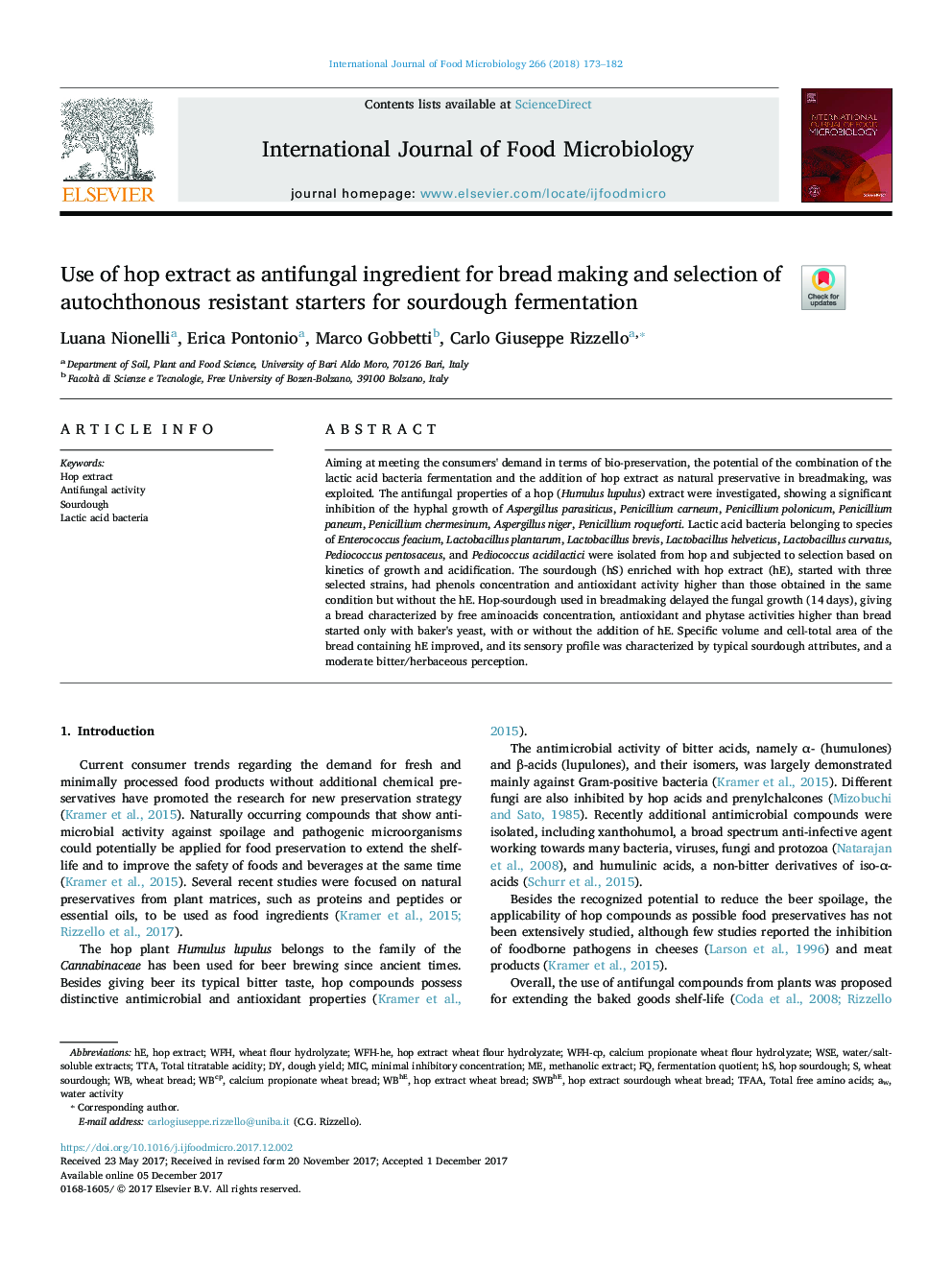| Article ID | Journal | Published Year | Pages | File Type |
|---|---|---|---|---|
| 8844323 | International Journal of Food Microbiology | 2018 | 10 Pages |
Abstract
Aiming at meeting the consumers' demand in terms of bio-preservation, the potential of the combination of the lactic acid bacteria fermentation and the addition of hop extract as natural preservative in breadmaking, was exploited. The antifungal properties of a hop (Humulus lupulus) extract were investigated, showing a significant inhibition of the hyphal growth of Aspergillus parasiticus, Penicillium carneum, Penicillium polonicum, Penicillium paneum, Penicillium chermesinum, Aspergillus niger, Penicillium roqueforti. Lactic acid bacteria belonging to species of Enterococcus feacium, Lactobacillus plantarum, Lactobacillus brevis, Lactobacillus helveticus, Lactobacillus curvatus, Pediococcus pentosaceus, and Pediococcus acidilactici were isolated from hop and subjected to selection based on kinetics of growth and acidification. The sourdough (hS) enriched with hop extract (hE), started with three selected strains, had phenols concentration and antioxidant activity higher than those obtained in the same condition but without the hE. Hop-sourdough used in breadmaking delayed the fungal growth (14Â days), giving a bread characterized by free aminoacids concentration, antioxidant and phytase activities higher than bread started only with baker's yeast, with or without the addition of hE. Specific volume and cell-total area of the bread containing hE improved, and its sensory profile was characterized by typical sourdough attributes, and a moderate bitter/herbaceous perception.
Keywords
Related Topics
Life Sciences
Agricultural and Biological Sciences
Food Science
Authors
Luana Nionelli, Erica Pontonio, Marco Gobbetti, Carlo Giuseppe Rizzello,
